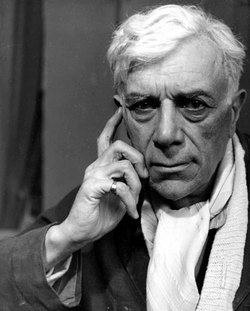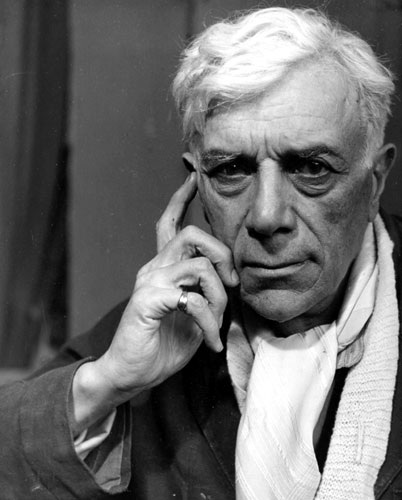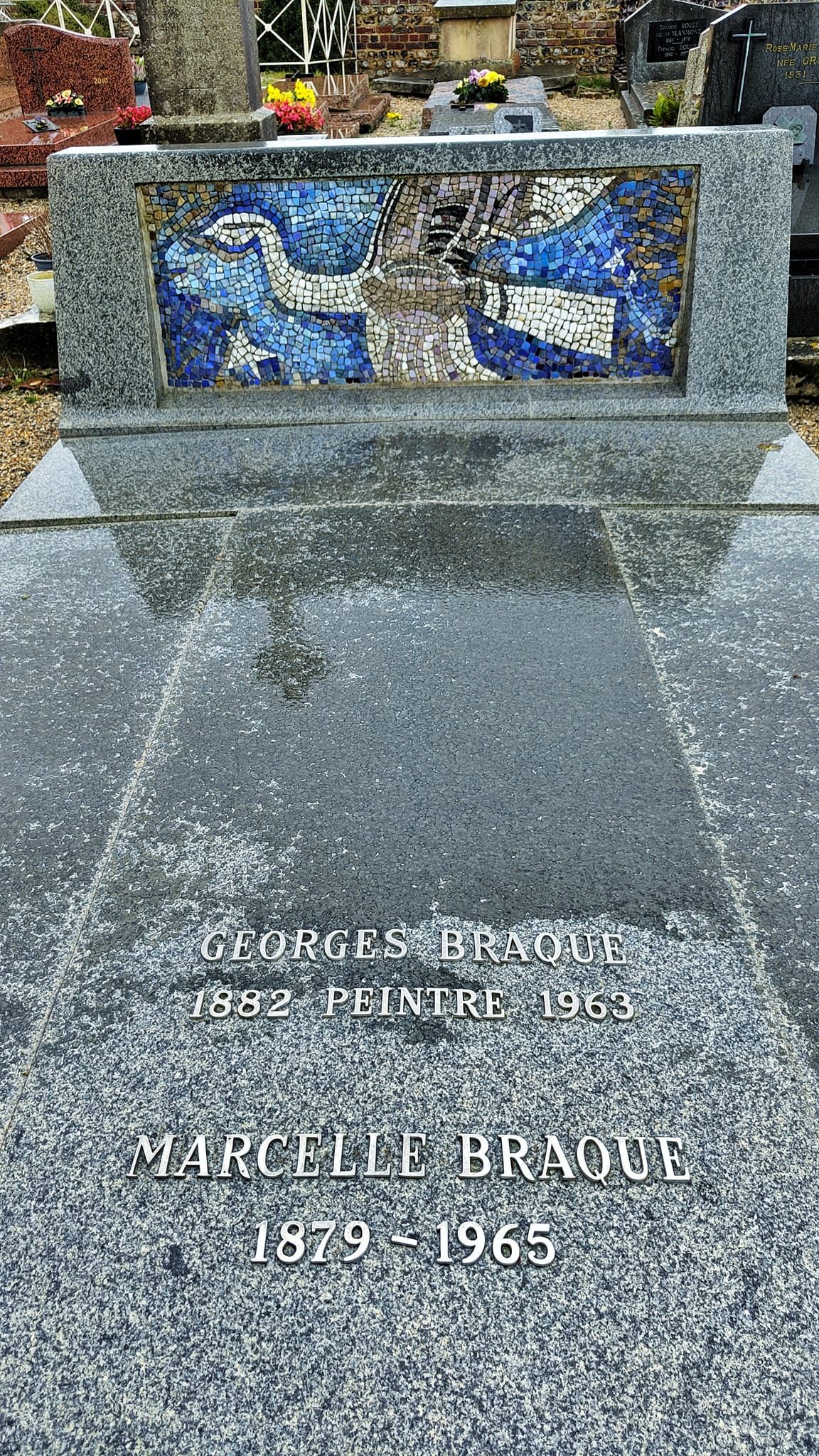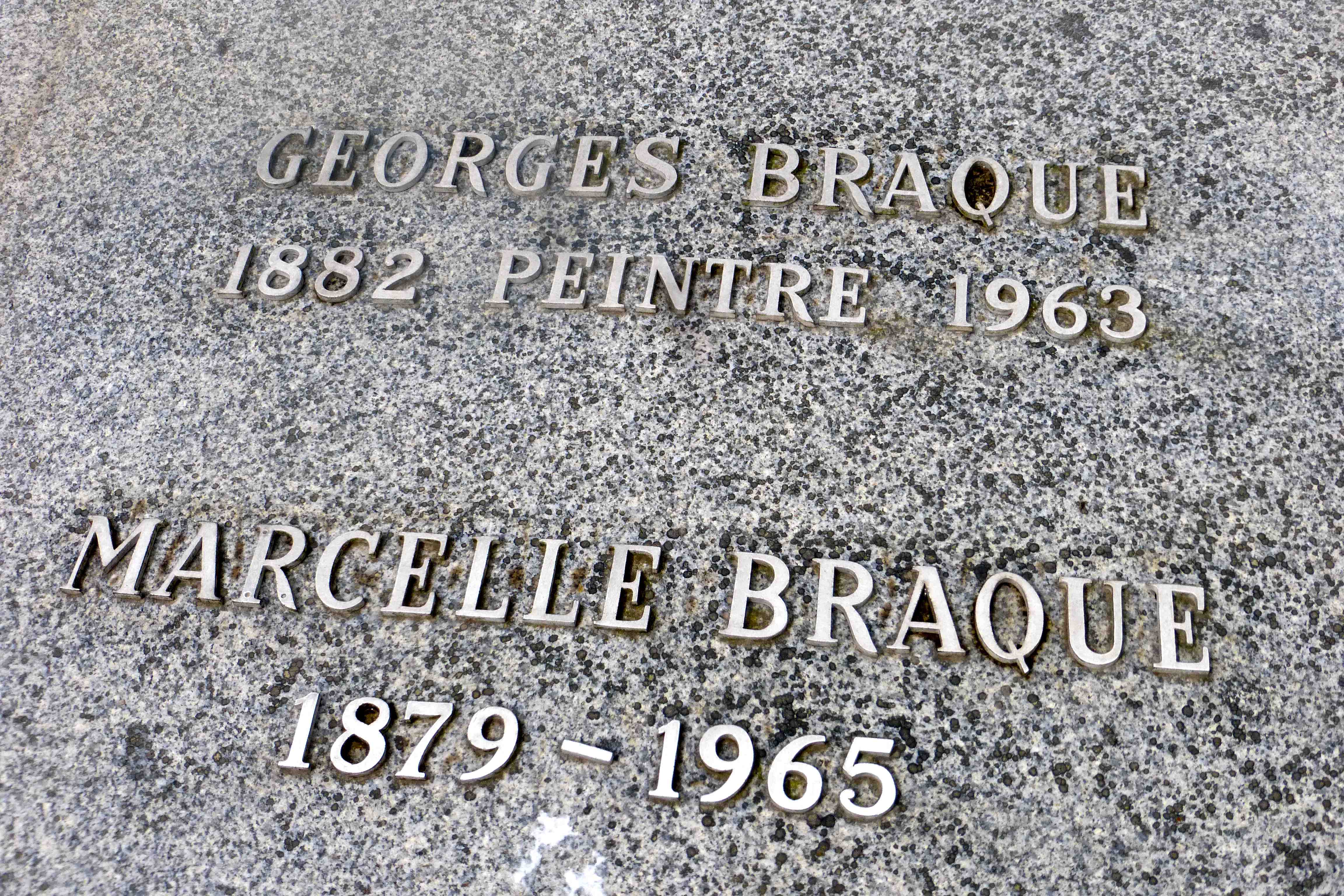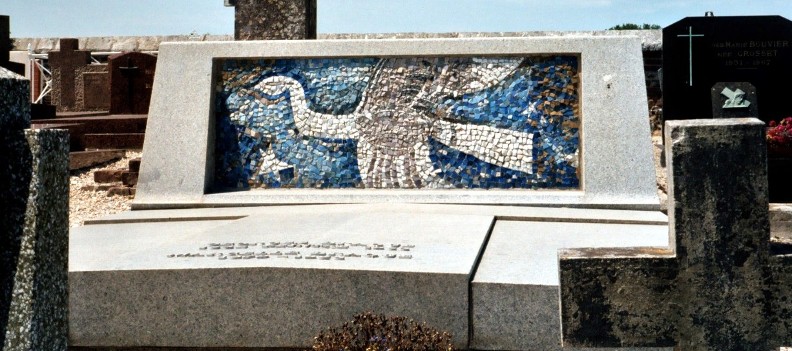Painter. With Pablo Picasso he developed Cubism, an important movement of 20th Century art. He and other Cubists created new ways of depicting space and movement by fragmenting objects into basic geometric forms, showing them at all angles at once, and merging them with their backgrounds. Braque was also among the first to incorporate typesetting and collage into his paintings, and enriched their texture with imitations of marble and wood grain. His overall style is marked by great elegance and restraint. Most of his canvases are still lifes. Masterworks of his Cubist period include "Violin and Candlestick" (1910), "Man with a Guitar" (1911), "Clarinet" (1912), "Still Life with Bottles and Glasses" (1912), and "Woman with a Guitar" (1913). Braque was born in Argenteuil, France, and studied at the School of Fine Arts in Le Havre and the Humbert Academy in Paris. He was associated with the Fauve movement until 1907, the year he met Picasso and discovered the work of Paul Cézanne. The landscape "Houses at L'Estaque" (1908) was his first step towards Cubism. From then until 1914 he and Picasso were close collaborators, pushing the new technique through its analytical and synthetic phases in a spirit of friendly one-upmanship. After World War I service in the French Army, during which he was seriously wounded, Braque minted a softer, more sensual and colorful style that utilized elements of Fauvism and Cubism. Important later works include the designs for three Diaghilev ballets, "Les Facheux" (1924), "Salade" (1924), and "Zephire et Flore" (1925); "Still Life with Guitar and Fruit" (1924); "Nude" (1925); "Woman with a Mandolin" (1937); and "Birds" (1952 to 1963), a series of paintings and lithographs which show nearly abstract designs of birds in flight. In 1961 Braque was honored as the first living artist to have his work exhibited at the Louvre. He was also an occasional sculptor and created the mosaic that decorates his grave at the Cimètiere de Varengeville.
Painter. With Pablo Picasso he developed Cubism, an important movement of 20th Century art. He and other Cubists created new ways of depicting space and movement by fragmenting objects into basic geometric forms, showing them at all angles at once, and merging them with their backgrounds. Braque was also among the first to incorporate typesetting and collage into his paintings, and enriched their texture with imitations of marble and wood grain. His overall style is marked by great elegance and restraint. Most of his canvases are still lifes. Masterworks of his Cubist period include "Violin and Candlestick" (1910), "Man with a Guitar" (1911), "Clarinet" (1912), "Still Life with Bottles and Glasses" (1912), and "Woman with a Guitar" (1913). Braque was born in Argenteuil, France, and studied at the School of Fine Arts in Le Havre and the Humbert Academy in Paris. He was associated with the Fauve movement until 1907, the year he met Picasso and discovered the work of Paul Cézanne. The landscape "Houses at L'Estaque" (1908) was his first step towards Cubism. From then until 1914 he and Picasso were close collaborators, pushing the new technique through its analytical and synthetic phases in a spirit of friendly one-upmanship. After World War I service in the French Army, during which he was seriously wounded, Braque minted a softer, more sensual and colorful style that utilized elements of Fauvism and Cubism. Important later works include the designs for three Diaghilev ballets, "Les Facheux" (1924), "Salade" (1924), and "Zephire et Flore" (1925); "Still Life with Guitar and Fruit" (1924); "Nude" (1925); "Woman with a Mandolin" (1937); and "Birds" (1952 to 1963), a series of paintings and lithographs which show nearly abstract designs of birds in flight. In 1961 Braque was honored as the first living artist to have his work exhibited at the Louvre. He was also an occasional sculptor and created the mosaic that decorates his grave at the Cimètiere de Varengeville.
Bio by: Bobb Edwards
Family Members
Advertisement
